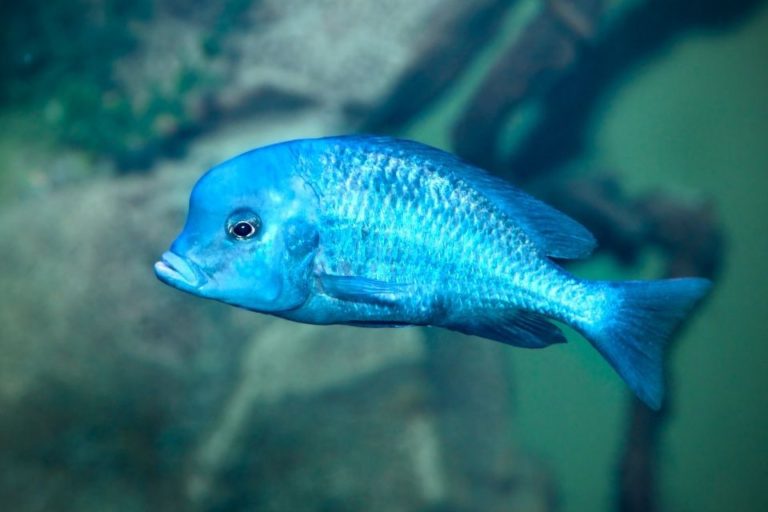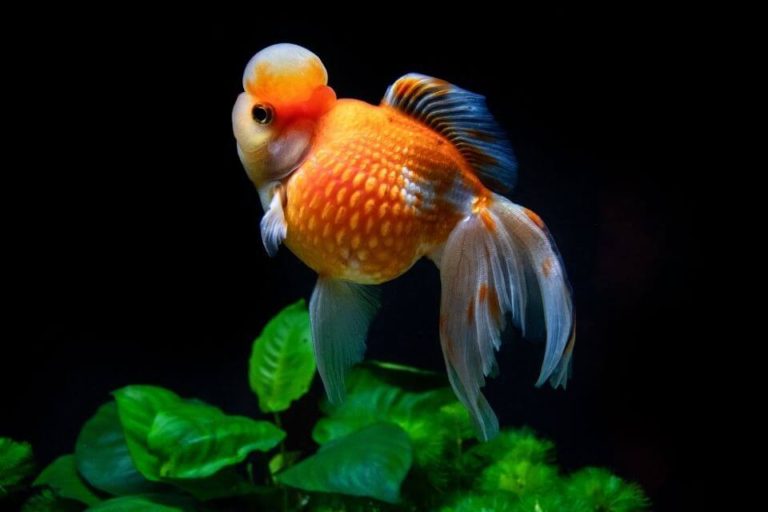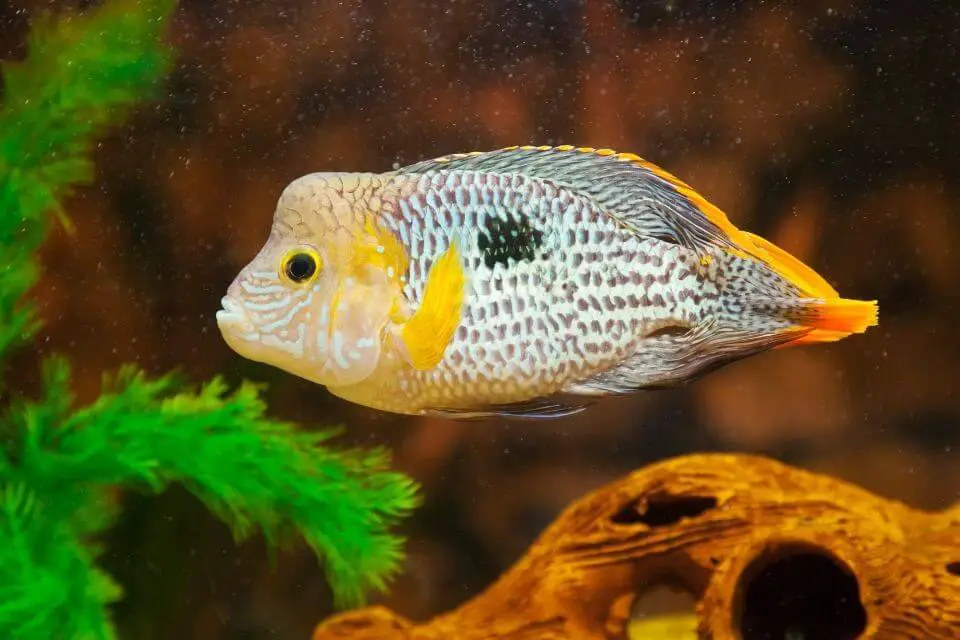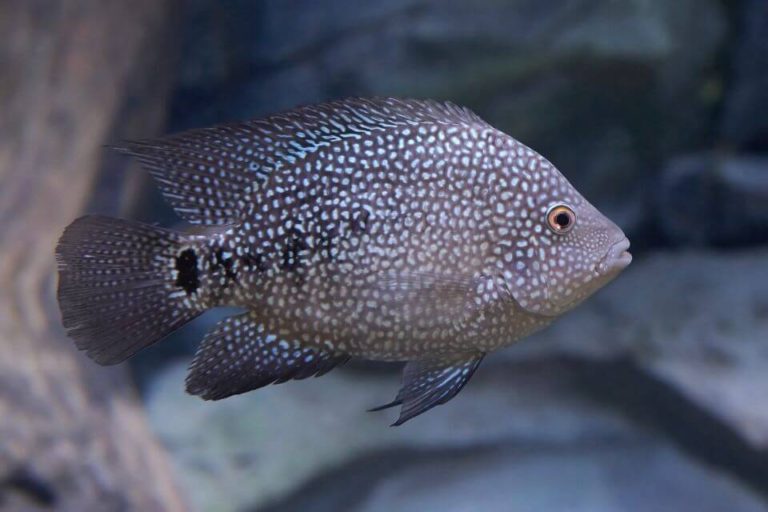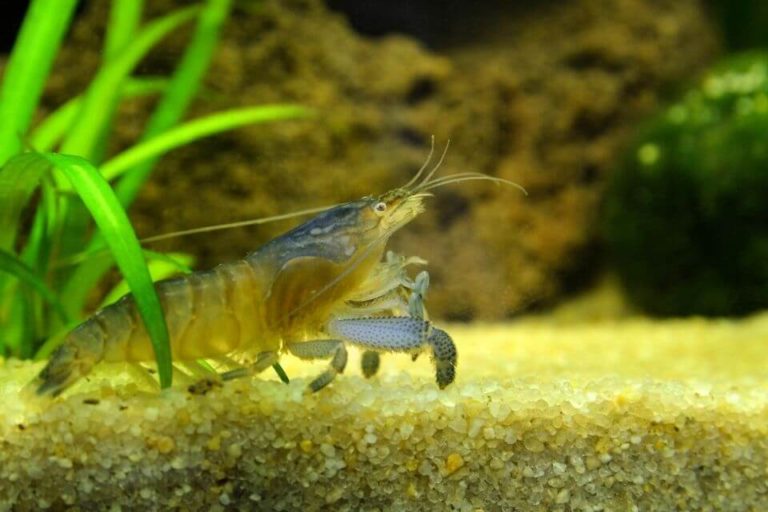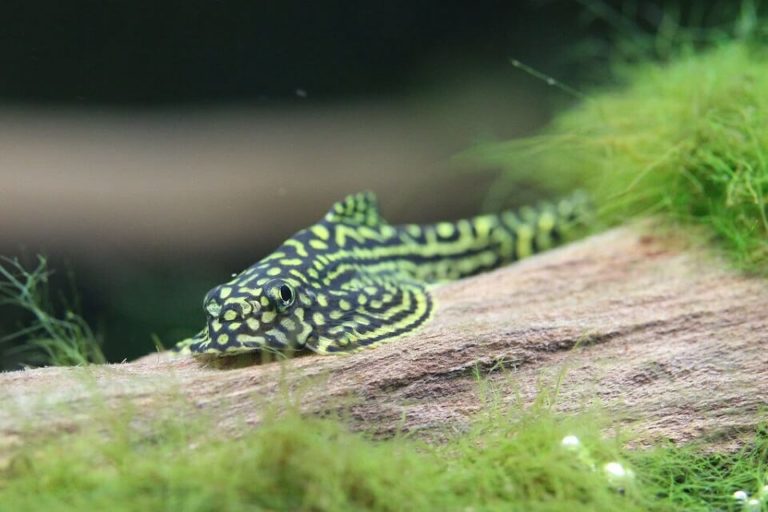Harlequin Rasbora Care: Tank Mates, Tank Size, Food and More
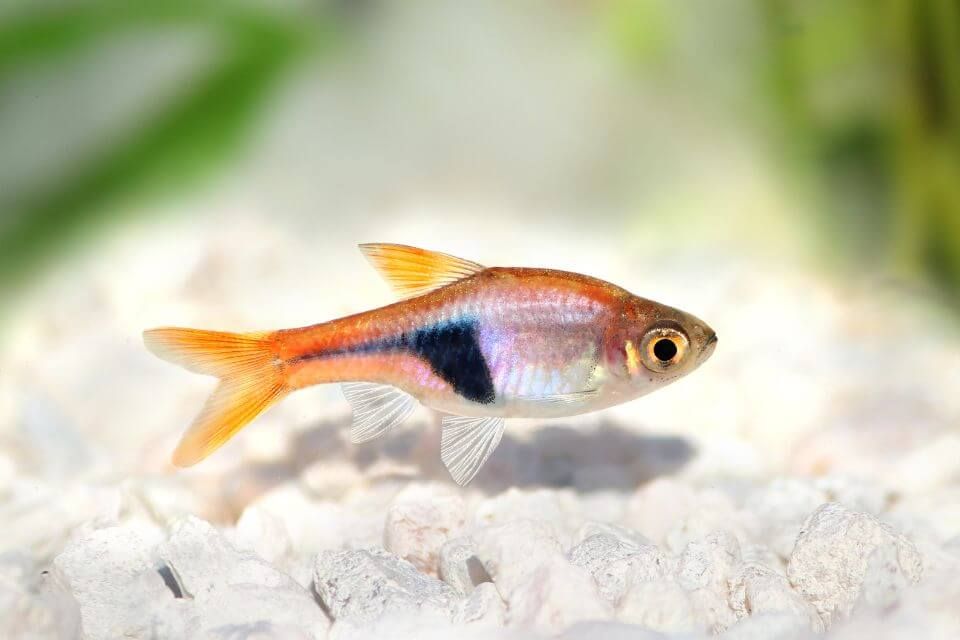
Harlequin Rasbora Fish (Trigonostigma Heteromorpha) is one of the most exciting freshwater aquarium fish in the world. This beautiful little creature is peaceful, hardy, and an easy-to-care aquarium fish.
If you’re looking for a way to bring that sense of appearance into your fish tank, why not consider adding some colorful fish species to your aquarium?
Fish can be a great addition to any aquarium, and there are many different species to choose from. If you’re looking for a peaceful fish that will add some color to your tank, you may want to consider the Harlequin Rasbora.
In this Harlequin Rasbora care article, we’ll provide an overview of the fish and discuss its care requirements. We’ll also take a look at some common diseases that this fish can suffer from and provide tips on how to prevent them.
Harlequin Rasbora Overview
They are one of the most popular freshwater fish species due to their bright colors and peaceful nature. These fish are scientifically known as Trigonostigma Heteromorpha and originates from Southeast Asia.
In the wild, these fish can be found in schools swimming in moderate to slow-moving waters. These fish are schooling fish and do best when kept in groups of 6 or more.
They are relatively peaceful fish but may nip at the fins of longer-finned tank mates. In terms of diet, Harlequin Rasboras are not picky eaters and will accept most kinds of pellets and flakes.
Overall, Harlequin Rasboras make for a great addition to any freshwater tank. Their bright colors and peaceful nature make them a favorite among beginner and experienced aquarium enthusiasts alike.
Harlequin Rasbora Size
Harlequin Rasbora size is relatively small, with most adults only growing to be about 2 inches in length. However, some individuals have been known to reach lengths of up to 3 inches.
Females are typically smaller than males and have shorter fins.
Harlequin Rasbora Lifespan
In captivity, Harlequin Rasboras have a lifespan of 5 to 8 years. However, with proper care, some individuals have been known to live for 10 years or more.
Harlequin Rasbora Appearance And Colors
It gets its name from its distinctive coloration, which features a bright orange body with black triangular markings on both sides of its body. These marking are formulated from the mid of its body towards to tail.
You will notice their body color varies from pinkish red to orange, but it depends on the specimen, the tank environment they live in, and the quality of the food they receive.
The spots are arranged in a distinct pattern that resembles the traditional harlequin clown costume. In addition to its striking colors, the Harlequin Rasbora also has a long, slender body that can reach up to 2 inches in length.
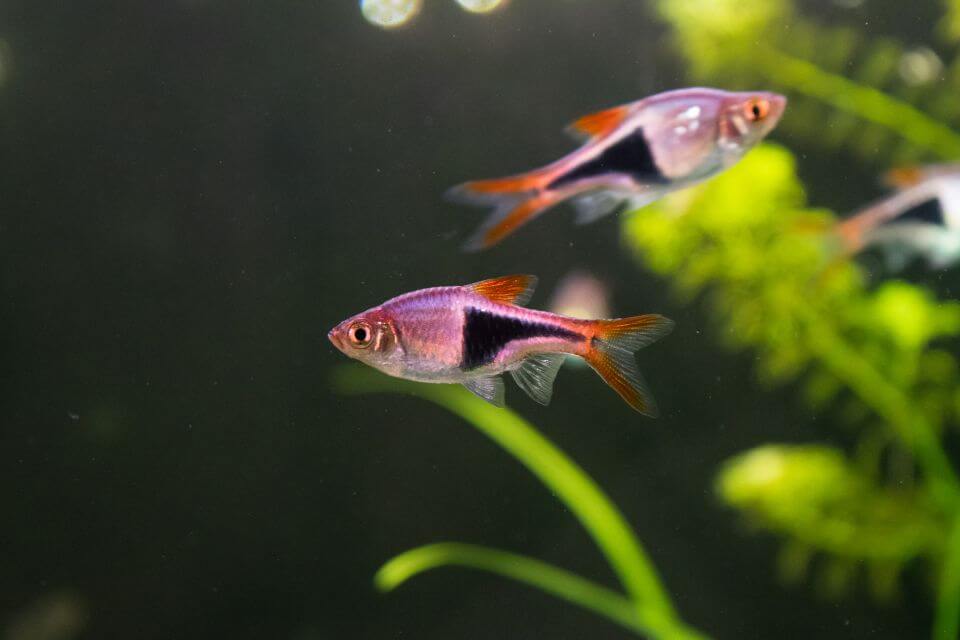
The dorsal fins and the caudal and anal fins are tipped with reddish-orange and transparency look at the end. You will notice there the black cored marking on the top edge of its Dosal fin on some specimens.
The pelvic fins and pectoral fins remain transparent with light orange color tough. The anal fin has transparent look with a black color marking at the bottom edge of the fin.
Pectoral fins are also transparent and you cannot notice them from the sides.
Harlequin Rasbora Behavior & Temperament
Harlequin Rasboras are peaceful and relatively easy to care for fish that make a great addition to many community aquariums. They are fun to watch as they school together and their bright colors add pops of contrast against green plants.
Harlequin Rasboras do best in groups of at least 6 fish and should be kept with other peaceful species that prefer similar water conditions. They do well in planted tanks and will often graze on algae.
Harlequin Rasboras are generally peaceful fish, but males can be territorial with each other if there are not enough space or hiding places in the tank.
In addition, these fish are known to jump, so it is important to have a tight-fitting lid on the aquarium. Overall, Harlequin Rasboras are a great choice for many beginner aquarists looking to add some color and activity to their tank.
Harlequin Rasbora Care and Aquarium Conditions
Harlequin Rasboras are relatively easy to care for and make a great addition to many community aquariums. They prefer groups of 6 or more and do best in a planted tank with plenty of hiding places.
The water should be clean and well-filtered at all times. Harlequin Rasboras are not picky eaters and will accept most kinds of pellets and flakes.
In addition, these fish often graze on algae, so it is not necessary to provide them with additional vegetables or algae wafers. It is important to feed them small meals several times a day rather than one large meal to prevent overfeeding.
Harlequin Rasbora Tank Size
Harlequin Rasboras are one of the most popular fish in the aquarium trade. They are relatively easy to care for and make a beautiful addition to any freshwater tank.
While they can thrive in a wide range of tank sizes, it is important to provide them with enough space to swim and explore. A minimum tank size of 10 gallons is recommended for a school of 5 to 6 Harlequin Rasboras.
Because of their tiny size, you are will not need large tanks. But, larger tanks will provide your fish with more room to grow and will also offer more stability in water conditions.
If you plan to have them with other same-size tankmates it is better to go for a larger tank such as 20 to 30 gallons.
In addition, a larger tank will allow you to create a more diverse and natural-looking environment for your fish. So, if you’re considering adding some Harlequin Rasboras to your aquarium, be sure to give them plenty of space to thrive.
Tank Setup
Setting up a new fish tank can be a fun and exciting process, but it’s important to do your research before you get started.
If you’re thinking about adding some Harlequin Rasbora to your tank, there are a few things you’ll need to take into account. First, you’ll need to choose the right substrate.
This can be anything from aquarium gravel to fine soft sand, but it’s important to avoid using anything that could break down and release toxins into the water. Also, avoid sharp objects that may harmful to its tiny bodies.
Second, you’ll need to make sure the lighting is bright enough to encourage plant growth but not so intense that it stresses the fish. Third, you’ll need to install a water filter to keep the water clean and free of harmful chemicals.
Finally, you’ll need to add some decorations. Rocks, caves, driftwood, and live plants are all great options, but make sure there are plenty of hiding places for the fish to feel comfortable and secure.
Remember to also include a lid on your tank to prevent jumpers! With a little bit of planning, you can create the perfect environment for your new Harlequin Rasbora friends.

Water Parameters And Testing
Maintaining the proper water parameters in your Harlequin Rasbora tank is essential for the health and well-being of your fish.
The ideal temperature range for Harlequin Rasboras is 72°F to 80°F, with a pH of 6.0 – 7.5 and the hardness of the water from 2 to 15 dKH.
To ensure that your tank stays within these parameters, it is important to test the water regularly and make adjustments as needed.
A water testing kit can help you to keep tabs on your water quality, and an aquarium water filter will help to remove any harmful toxins or chemicals from the water.
By keeping a close eye on your water parameters, you can help to ensure that your Harlequin Rasboras remain happy and healthy for years to come.
Suitable Aquarium Plants
there are plenty of options that you can choose from. Some of the best plants for a Harlequin Rasbora tank include Java Fern, Anubias, and Hornwort. These plants are all easy to care for and can thrive in a wide range of water conditions.
In addition, they provide plenty of places for the fish to hide and explore, which can help to reduce stress levels.
Live plants are always a great option for an aquarium, but if you’re not up for the maintenance, there are plenty of fake plants that will work just as well. Just be sure to avoid anything with sharp edges that could hurt the fish.
Common Diseases And Prevention
Harlequin Rasbora is a popular choice for aquariums because of its vibrant color and playful personality. However, like all fish, Harlequin Rasboras are susceptible to diseases.
The most common diseases include infections of the skin and fins, known as tail or fin rot, as well as fungal infections. Both of these types of infections are typically caused by poor water quality, so the best way to prevent them is to maintain a clean aquarium.
If you notice that your fish does develop an infection, there are over-the-counter treatments available that can be effective.
However, it’s always best to do a little more research or consult an experienced fishkeeper before treating your fish, as some medications can be harmful because there are tiny.
With proper care, your Harlequin Rasbora will stay healthy and happy for years to come.
Harlequin Rasbora Food And Feeding Schedule
Harlequin Rasboras are Omnivorous. This means that their diet consists of both meat and vegetables. In the wild, they feed on small insects, crustaceans, and worms. They will also consume algae and other plant matter.
In captivity, Harlequin Rasboras can be fed a variety of foods, including live, frozen, and flake options. They should be given a varied diet to ensure that they are getting all the nutrients they need.
Live food options include brine shrimp and daphnia. Frozen foods such as bloodworms and Mysis shrimp are also a good option. When feeding flake food, look for a portion of high-quality tropical fish food that contains spirulina or algae.
Harlequin Rasboras should be fed once or twice a day, depending on the amount of food they consume. It is important not to overfeed them, as this can lead to problems such as obesity and swim bladder disease.
Harlequin Rasbora Male Vs Female Difference (Gender)
One of the most popular freshwater aquarium fish is the harlequin rasbora. These small, colorful fish are relatively easy to care for, and they make a striking addition to any tank.
When choosing harlequin rasboras, it’s important to know the difference between males and females.
Males are typically more brightly colored than females, with striking red fins. They also tend to be the same size as their female counterparts, reaching a maximum of about 2 inches in length.
Females, on the other hand, are usually gold in color with orange fins with a transparency touch. You can clearly notice the belly of female counterparts is wider than the male fish.
In terms of personality, there are no differences between male and female harlequin rasboras. Both genders are peaceful and social, and they will do well in tanks with other peaceful fish.
With their bright colors and friendly dispositions, harlequin rasboras make a great choice for beginning aquarists.
Breeding Harlequin Rasbora
With proper care, your Harlequin Rasboras will breed and thrive in the home aquarium. They are egg layers, meaning that the female will lay a batch of eggs and the male will fertilize them.
It’s best to keep a group of at least fish with a ratio of one male fish for every 2 females. This will allow the fish to find their own mates and will also help to reduce aggression.
The aquarium should be well-planted, and there should be plenty of hiding places for the fry (baby fish) to hide when they are first born. Plants with broad leaves would be ideal in the breeding tank since.
To encourage spawning the tank temperature should be between 76 and 82 degrees Fahrenheit, and the pH should be between 6.0 and 6.5. Also, the water hardness should remain below 4 dGH.
The email fish lay about 12 eggs at a time and within two hours period, they will lay about 300 eggs in total. The eggs will then hatch in about 24 hours.
Once the fry is hatched they will survive with the egg sac for 24 hours and then they should be fed with a fined diet for two weeks. After 2 weeks will be able to feed on live foods such as baby brine shrimp or micro worms.
Right after the breeding process is completed you must separate adult fish from the tank to avoid feeding on baby fish.
Harlequin Rasbora Tank Mates
One of the best things about Harlequin Rasbora is that they are peaceful and can be kept with a variety of different fish. When choosing Harlequin Rasbora tank mates, it’s important to choose fish that are similar in size and temperament.
If you keep them in a community tank it is best to keep Harlequin Rasboras in a larger group which is about 10 specimens together. Because they are schooling fish species and will do well in large groups.
Some good choices for tank mates include:
- Honey Gourami
- Dwarf Gourami
- Neon Tetras
- Galaxy Rasbora
- Chili Rasbora
- Cherry Barbs
- Corydoras Catfish
- Black Phantom Tetra
- Cardinal Tetra
- Zebra Danio
- Rummy Nose Tetra
It’s important to avoid keeping Harlequin Rasboras with fish that are aggressive or much larger than them. Also, be sure to provide plenty of hiding places in the tank so that they can escape if they feel threatened.
Harlequin Rasbora Origin And Distribution
The Harlequin Rasbora is a small, brightly-colored fish that is native to Southeast Asia. The fish is found in slow-moving streams and rivers, and it typically feeds on insects and other small invertebrates.
The species is distributed throughout Laos, Cambodia, Thailand, Vietnam, and Malaysia. In recent years, fish has been introduced to Singapore and Indonesia.
The introduction of the Harlequin Rasbora to new habitats has led to some concerns about the impact on local ecosystems. However, the fish has generally been able to adapt well to its new surroundings.
Frequently Asked Questions
In this section, we will answer some of the most frequently asked questions about Harlequin Rasboras. Please read on if you have any questions about these fish.
Is Harlequin Rasbora Hardy?
Yes, Harlequin Rasbora is a relatively hardy fish species. It can tolerate a wide range of water conditions and is not particularly susceptible to disease.
However, like all fish, it is important to provide proper care and to maintain good water quality in the aquarium.
Do Harlequin Rasboras Need A Filter?
Yes, Harlequin Rasboras need a filter in their aquarium. A good quality filter will help to keep the water clean and clear, and it will also provide aeration.
Is Harlequin Rasbora Aggressive?
No, Harlequin Rasbora is not an aggressive fish. It is a peaceful species that do well in community tanks. It is best to keep them in groups of at least 10 fish.
Do Harlequin Rasboras Nip Fins?
No, Harlequin Rasboras do not nip fins. They are a peaceful fish species that is unlikely to bother other tank mates. When it kept with long-finned fish species like Betta fish you will notice Harlequin Rasboras try to play around with fins.
How Many Harlequin Rasboras Should Be Kept Together?
It is best to keep at least 10 Harlequin Rasboras together. They are a schooling fish species that do well in large groups.
What Temperature Do Harlequin Rasboras Like?
Harlequin Rasboras prefer a water temperature of between 73 and 82 degrees Fahrenheit (23 to 28 C).
What Is The Difference Between Lambchop Rasbora Vs Harlequin Rasbora?
The Lambchop Rasbora is pretty much similar fish species to the Harlequin Rasbora. Both fish are small, brightly-colored, and peaceful.
The main difference between the two species is that the Lambchop Rasbora (Trigonostigma espei) has a more orange color body, while the Harlequin Rasbora (Trigonostigma heteromorpha) has a more pinkish-colored body.
The Lambchop Rasbora is also a bit rare, and it is not as widely available as
How Much Does A Harlequin Rasbora Cost?
As far as cost goes, Harlequin Rasboras typically retail for around $3-$5 USD each. However, prices may vary depending on the individual fish’s coloration and patterning as well as the location of the store.
When it comes to where to buy, your best bet is to find a local fish store or an online retailer that specializes in tropical fish. This way, you can be sure that you’re getting a healthy fish that will acclimate well to your home aquarium.
You might find online such as Amazon, Liveaquaria, and eBay that sells Harlequin Rasbora for a lower price.
Final Thoughts
The Harlequin Rasbora is a popular aquarium fish that is known for its brightly-colored body. It is a native of Southeast Asia, and it typically inhabits slow-moving streams and rivers. The fish is not aggressive and does well in community tanks.
It is best to keep at least 10 fish together. If you’re looking for a colorful and peaceful addition to your aquarium, the Harlequin Rasbora is a good choice.
Do you have any experience with keeping Harlequin Rasboras? We’d love to hear about it in the comments below!


